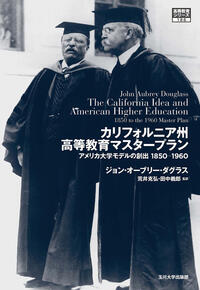2019 marks the 20th anniversary of the Center’s launch of its Research and Occasional Paper Series (ROPS). Since its founding in 1957 as the first academic research center focused on higher education in the United States, and probably the world, CSHE had published various working papers by its many associates and visiting scholars. But in 1999, the launch of ROPS by founding editor John Aubrey Douglass initiated a systematic publication series in an on-line, open access format, dedicated to publishing papers that relate to the Center’s mission: to promote multidisciplinary research.
Since 1999, more than 250 ROPS have been published that range from thoughtful essays by practitioners and observers of higher education policy and politics, to rigorous academic studies that reflect the diversity of CSHE’s many research associates over the years – authors who bring their methodologies in sociology, history, political science, economics, engineering and many other academic disciplines.
ROPS has also proved a highly successful vehicle for distributing the work of the Center’s many researchers and associates’ overtime with an average of more than 100,000 individual downloads of papers a year that are listed on CSHE ROPS website, UC’s eScholarship website, and ERIC (the US Department of Education websource). Contributors have ranged from practitioners such as university presidents, to world renowned researchers and CSHE visiting scholars, to graduate students.
Many papers have had a significant impact on policy discussions; many have later been published in academic journals or as exploratory chapters that have led to books. One of the founding principles of the ROPS series is that authors retain copyright, that they use the citation formats of their discipline, and that there are no significant limits on the length of their contribution – although with advice provided by the editor and selected reviewers.
The following provides a incomplete selection of ROPS contributions over the years some by topic and including noted authors and others that made important scholarly and policy relevant contributions. For a complete list of ROPS contributions by year see the CSHE ROPS website. To search ROPS by title/author/subject, visit the Publications landing page, select "ROPS and Occasional Paper Series" under the "Publication Type" drop down menu.
Browse ROPS by Topic
Click on the drop down menus below to view ROPS published by topic.


 The
The